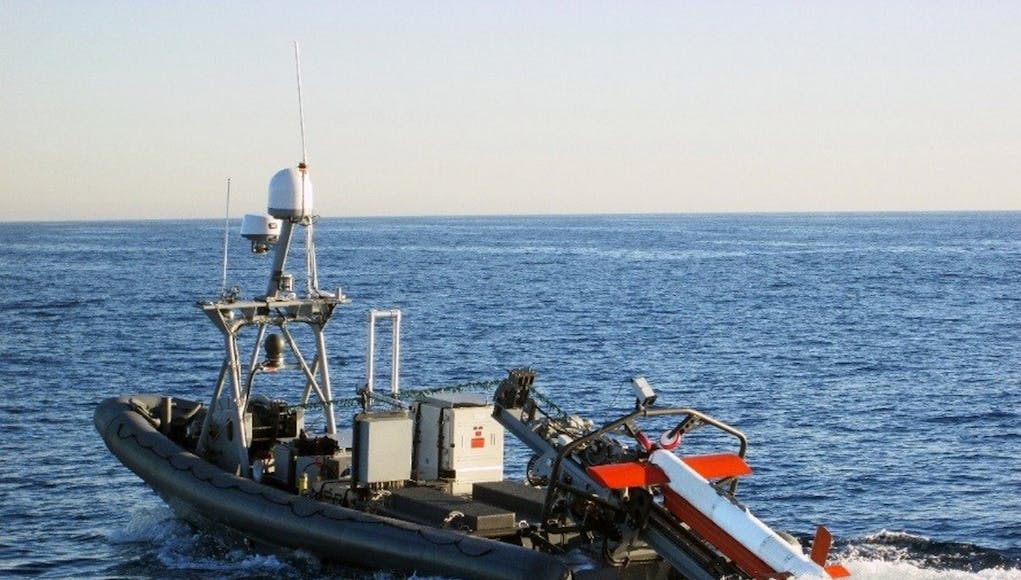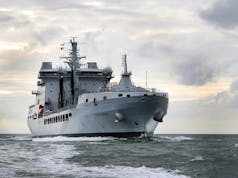The Northrop Grumman AQS-24B mine hunting system has demonstrated performing mine warfare from a high-speed, unmanned surface vessel at the Royal Australian Navy-sponsored Autonomous Warrior 2018 exercise in Jervis Bay, Australia.
The Northrop Grumman remote controlled Mine Hunting Unmanned Surface Vessel, with the AQS-24B mine hunting sensor, demonstrated a safe standoff mine hunting and undersea surveillance capability targeted at addressing three key aspects of the mine warfare challenge: reducing the mine clearance timeline; accurate detection, localisation, classification and identification of undersea objects of interest.
According to the company website:
“The AQS-24B system includes the world’s first combined operational High-Speed Synthetic Aperture Sonar and an optical laser line scan sensor, which provides complete coverage out to maximum range on a single pass. The real time analysis capability demonstrated how unmanned systems can augment manned mine warfare operations.”
“The demonstration highlighted Northrop Grumman’s leading role in proving the operational utility of unmanned maritime systems in the mine warfare domain,” said Alan Lytle, vice president, undersea systems, Northrop Grumman.
“At operational speeds significantly higher than other mine hunting systems on the market, the USV/AQS-24B combination successfully completed a number of scenarios and challenges that were set by the Royal Australian Navy’s exercise command task group.”
The MHU was outfitted with L3 ASV’s ‘ASView’ unmanned control system. The system, say the company, provided the capability to control the vessel from a remote location with minimal human oversight.














As a demonstrator it is fine, but I would imagine the production version would need to be a little larger. Would ‘we’ want to carry a ROV for example? Bow thrusters? Ballistic armour? Would a semi-submersible be a better option? Would we need to consider having an option for it be manned? How many drones would we need per hull? What about other boats? Facilities like decompression chambers and so on? Still think in the future we are going to end up with a 750 ton hull, but they won’t be as expensive per ton as SRMH or MCM nowhere close.
Then again perhaps we should look at something like the D’Entrecasteaux-class patrol ship or Leeuwin-class survey vessel in form and go for 4 drones plus extra boats?
The RAN’s new Arafura Class OPVs provide a suitable platform for this remote technology. The RAN has already foreshadowed the OPVs taking over (or supplementing) the existing Huon Class minehunters traditional role.
To quote the RAN website: “The OPV design will support specialist mission packages, such as a maritime tactical unmanned aerial system, and into the future, rapid environmental assessment and deployable mine counter measure capabilities.”
The Lurrsen design is already in service with Brunei as the Darussalam-class. Link to pic shows the stern ramp that can be used to launch and recover a RHIB while underway. So the Northrop demonstrator as configured could be accommodated on the Arafuras.
https://en.wikipedia.org/wiki/Darussalam-class_offshore_patrol_vessel#/media/File:RAN-IFR_2013_D5_19.JPG
The OPVs will be the RANs platform of choice to deliver both undersea and aerial unmanned systems with Navy already acquiring the Schiebel s100 UAV for the Arafuras.